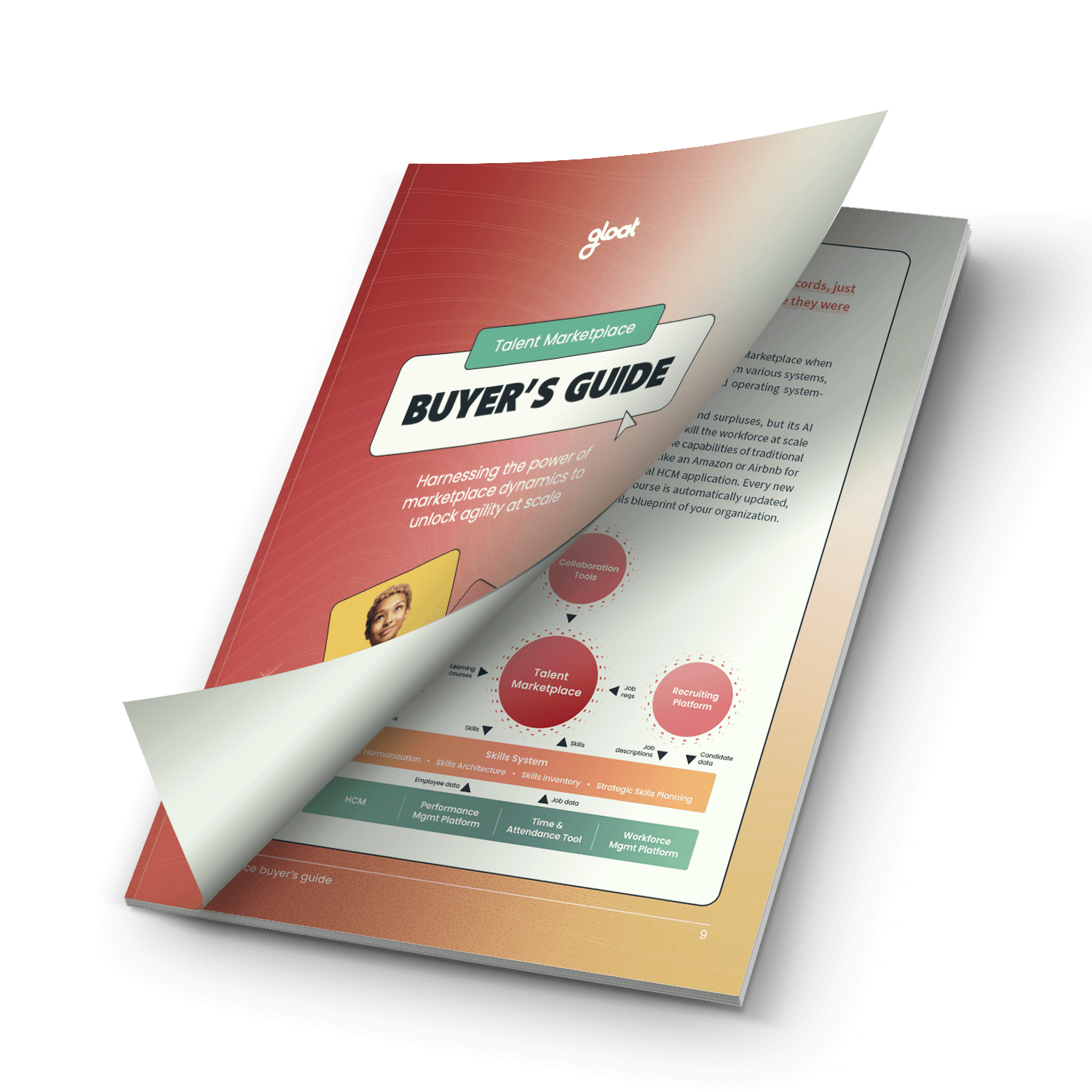Unlocking organizational potential: effective hiring and development for internal talent

There’s still a lot of uncertainty about 2024 but it’s safe to say that we’re entering an exceptionally challenging hiring landscape. There’s fierce competition for in-demand skills and a scarcity of competitive applicants with the knowledge needed to step into high-priority roles with confidence.
As a result of this hyper-competitive environment, savvy leaders are turning their attention inwards and developing learning pathways to help employees build the skills they need. In addition to bridging knowledge gaps, internal mobility is known to improve employee engagement and inspire workers to achieve their full potential.
Instead of attempting to find the needle-in-a-haystack candidate from external talent pools, there are a few steps that leaders can take to empower their employees to step into new roles and hone the capabilities their organization will need in 2024 and beyond.
What are the benefits of internal hiring?
An overreliance on external hiring is always costly—and in today’s talent market, it’s both exceptionally competitive and phenomenally challenging to find applicants with in-demand skills. In contrast, internal hiring offers several distinct advantages, such as:
#1. Cost savings
Even if you recruit all-star candidates, hiring new employees is going to be expensive and time-consuming. It’s estimated that large enterprises lose more than $400,000 annually from the costs involved in recruiting and training new hires. Leaders who prioritize internal mobility can avoid shelling out unnecessary resources to recruit and train external candidates when existing employees already possess most of the skills they’re looking to acquire. Since these workers are already familiar with how your business works, you can also minimize onboarding processes and complete high-priority projects more efficiently.
#2. Attract and retain talent with in-demand skills
No employee wants their career to be stagnant. People value the opportunity to learn new things and take on new challenges. In fact, a recent LinkedIn report found that 94% of workers say they would stay at a company longer if it invested in their careers.
An internal mobility strategy shows your people that you’re serious about their growth and that you’ve got the systems in place to help them achieve their professional ambitions. When employees feel like their leaders are committed to their long-term growth and progression, they’ll be more motivated to go the extra mile for their employer and less likely to look for a job somewhere else.
#3. Boost engagement and morale
If you want to improve employee engagement, look no further than internal hiring. Our research shows that 63% of people are interested in being considered for new career opportunities, illustrating just how widespread the desire for internal mobility really is. If your people feel like they can take their professional lives in any direction with your support, you can feel confident that they will bring their all to the tasks and projects they’re responsible for.
4 steps for creating an effective internal hiring strategy
Want to establish an internal hiring strategy that gets results? Here are a few steps HR leaders can take to get started:
#1. Take stock of skills
Now that skill gaps are heading in the wrong direction, insight into workforce capabilities is non-negotiable. Korn Ferry predicts a talent shortage of more than 85 million people by 2030, which could result in about $8.5 trillion in unrealized annual revenues.
Rather than missing out on those earnings or struggling to hire within an incredibly competitive external talent landscape, companies can proactively address future skill gaps by prioritizing internal mobility and project participation now. Leaders need clear insight into all of their people’s capabilities, which isn’t always easy to come by.
Skills information is usually siloed among a few different HR systems, making it difficult for executives to get a single source of truth. To make matters worse, skills taxonomies are often out of date, leading to skill-building strategies that may not address the actual needs of an organization. Companies that are looking to level up internal hiring are turning to skills intelligence tools like Gloat’s Skills Foundation to gain visibility into their people’s capabilities. These systems are updated in real-time and pull from a worker’s CV or LinkedIn profile, in turn capturing all the expertise they bring to the table.
#2. Emphasize mentoring programs
When it comes to promoting internal hiring, mentoring is a win-win. Employees gain valuable leadership skills by mentoring their coworkers, while their colleagues have the chance to develop new expertise that aligns with their professional ambitions and long-term career goals.
The most impactful mentoring initiatives look beyond job titles and seniority levels. Instead, skills and interests are the deciding factors that shape mentor-mentee pairings. Talent marketplaces generate suggestions for matches based on these criteria to maximize the value employees derive from their mentoring experiences.
#3. Prioritize talent sharing, not talent hoarding
The days of relying on a few all-star employees to accomplish every single deliverable are over. While tapping into the same group of high performers might feel like the most efficient way to meet deadlines, it’s not doing your workforce any favors.
When managers fail to look outside of their immediate teams, they allow silos to build and prevent employees from developing the cross-functional expertise they need to take on new roles within their organization. To pave the way for effective internal hiring, managers must feel confident that they can source and tap qualified talent from across their organization—which is where talent marketplaces come into play.
These platforms enable managers to spin up cross-functional teams to get key projects across the finish line, in turn empowering all employees to pitch in on a diverse array of deliverables and build new skills in the process.
#4. Don’t let bias or barriers shrink your internal talent pools
To maximize internal mobility within your organization, leaders must ensure that all employees are empowered to explore new opportunities and that biases and barriers aren’t holding anyone back. Rather than letting pedigree or personal connections dictate career development opportunities, inclusive organizations harness talent marketplaces to ensure all employees have equal access to open projects and roles that align with their skill sets.
When employees can see all of the directions their careers can take and the knowledge they’ll need to acquire along the way, they’ll be encouraged to develop the expertise needed to move into new roles within their organization.
Why talent marketplaces are essential for internal hiring and mobility
In the past, a lack of transparency meant that internal mobility initiatives were often doomed to fail. Leaders couldn’t see their people’s skills, interests, and ambitions and employees didn’t have visibility into the opportunities within their organization. As a result, there was no way to match people to roles or align employees’ goals with the needs of the business.
The rise of talent marketplaces is here to change all of that. The platforms harness the power of AI to generate relevant suggestions for opportunities employees will want to get involved in. The newest offerings even give workers a view into their long-term growth potential by showcasing several directions their careers can take.
When part of an agile workforce OS that includes skills intelligence tools, leaders can also get a centralized location for executives to create, view, and manage skills so that they can see what competencies need to be developed and the gaps their people must bridge. While external recruiting and hiring have long been the dominant strategy for filling vacancies, leading businesses are increasingly prioritizing internal mobility and internal recruitment to develop the talent they need to thrive in the new world of work.
Talent marketplaces are a key platform for activating internal mobility and empowering employees to build new skills. However, they’ll only be successful if you choose a platform that aligns with the needs of your business and your workforce. Check out our buyer’s guide to learn how to choose a vendor with confidence.






